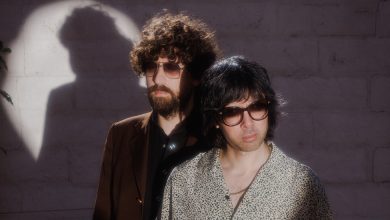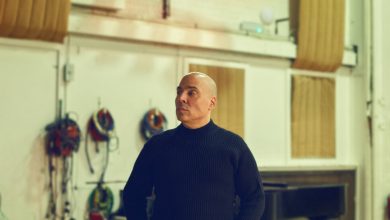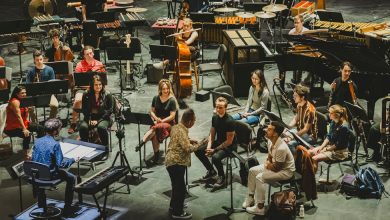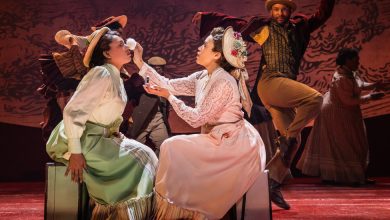Two Gems of June: Premieres at Carnegie Hall and Harlem School of the Arts

This month, you might feel the momentum in classical music swinging to the domestic festival circuit, with splashy premieres and revivals coming courtesy of Spoleto, Ojai and the Opera Theater of St. Louis. But New York isn’t finished yet, either.
Two premieres here over the weekend — one loudly trumpeted and one that enjoyed comparatively little fanfare — were newsworthy and enjoyable on their own terms, while also serving as reminders not to neglect the city’s June calendar.
Along with the New York Philharmonic’s presentations Friday of Barber’s Violin Concerto — featuring the star violinist Hilary Hahn — and Mahler’s Symphony No. 1, the audience heard the premiere composer Sarah Kirkland Snider’s 14-minute “Forward Into Light.”
Commissioned by the orchestra as part of its “Project 19” focus on femalecomposers, “Forward Into Light” was inspired by the suffragists Elizabeth Cady Stanton and Susan B. Anthony. With music that was by turns fragile and ferocious — and that also boasted touches of mordant wit — “Light” ably communicated its story about new ideas struggling for space (and for longevity). Spare, ascending motives in the harp anchored some early sections. When the orchestra responded and added in new, consonant melody in turn, there was a sense of material developing through collaboration. Elsewhere, a brief song for clarinet spurred material for other winds. Subsequent interplay, with Minimalist pulses in the violins offset by glissandi in the cellos and basses, recalled the swooning call-and-response arrangements of past Snider works, like “Circe and the Hanged Man,” from her 2010 song cycle “Penelope.”
The typically hard-charging Philharmonic music director Jaap van Zweden allowed these moments to breathe. Yet he also relished hairpin turns during which the music throttled into tutti writing. Late in the piece, he managed Snider’s quick dynamic shifts with a Hollywood sound-mixer’s feel for drama.
Overall, “Forward” was packed but not overstuffed with historical references, both abstract and concrete. Sometimes Snider’s Sturm und Drang suggested early feminist boldness, or corresponding public sphere controversy. However, a prerecorded sample of Dame Ethel Smyth’s “March of the Women,” late in the piece, didn’t register as strongly as the rest of the music. But even in the densest moments, you could discern Snider’s feel for wry commentary. A few walloping brass passages seemed to offer knowing nods and the subtlest of eye-rolls — as though the characters who inspired this music were aware that the unshakable strengths of the suffrage movement could outlast early, noisy objections.
And so, just as in her ecologically oriented “Mass for the Endangered,” the composer’s intellectual concerns dovetailed smoothly with the lush, inviting score. (The Death of Classical concert series presents Snider’s Mass, Monday through Thursday this week at Green-Wood Cemetery in Brooklyn.)
It was the beginning of a fine night for the Philharmonic. In partnership with Hahn, the orchestra gave Barber’s violin concerto some thrillingly rough-hewed edges, cutting against its public reputation as lighter fare. And though van Zweden’s over-articulated grimness in the middle sections of Mahler’s symphony came at the expense of the composer’s more colorful twists, the conductor’s handling of the outer movements delivered undeniable galvanic thrills.
While the Carnegie crowd received Hahn’s appearance with an ovation befitting her global-star status — and responded to the culmination of the Mahler with fever-pitch satisfaction — they also greeted the new piece with enthusiasm. It all made for a richly satisfying close to the orchestra’s challenging year outside its own auditorium.
The next time we hear them indoors, it will be at the newly refurbished, redesigned Geffen Hall, inside Lincoln Center. What they’ll play there, over the next few years, is beginning to come into focus. And as the Philharmonic’s administrators continue to deepen their engagement with music by Black composers, they might have looked uptown on Saturday for a few more ideas.
On the closing night of the second annual A Train Festival at the Harlem School of the Arts, the pianist and composer Adegoke Steve Colson — a veteran of the Association for the Advancement of Creative Musicians (or A.A.C.M.) — presented a 75-minute premiere of a six-movement work. Titled “Suite Harlem,” it was dedicated to the school, and presented in its 120-seat black box theater. Like Snider’s “Forward,” this work was also dedicated to a female pathbreaker: the soprano Dorothy Maynor, who founded this school in the 1960s.
Scored for an octet of piano, vocalist, trumpet, bass clarinet, violin, vibraphone, bass and drums, Colson’s music occasionally felt like a thrilling update of the soul jazz tradition — particularly when the composer’s piano took a subtly swinging yet harmonically unpredictable background role. At other points the work had all the high-energy markers of the 1970s avant-garde. And thanks to some stirring playing from the violinist Marlene Rice, the music also proposed a lineage with some of Ellington’s chamber-adjacent music with Ray Nance on violin (as in “Dance No. 3” from the Liberian Suite).
During “Searching Harlem,” the first movement of this premiere, the composer’s wife and longtime collaborator and vocalist Iqua Colson gave affecting voice to Maynor’s intentions in founding this institution. She brought crisp intonation to some mournful melodic lines that described the historical dearth of spaces for the neighborhood’s children “to sing or dance or act a part.” And later in the suite, during the explosive, uptempo penultimate movement, “Resilience,” she channeled the fiery sense of artistic expression made possible by the school, with an inventive solo of scat singing. It wasn’t supper-club-style scat, either — but an ingeniously shaped solo, concluding with some darting phrases that earned one of the night’s biggest rounds of applause. It brought to mind the couple’s long and fruitful collaboration, going back to 1980s releases like “Triumph!” and “No Reservation.”
The interdisciplinary nature of the school — and of the A.A.C.M. itself — was brought into enjoyable focus thanks to contributions by students, during the third movement (“Our Beautiful Children”). Two dancers, Kendall McDowell and Jenelle Henry, provided fluid accompaniment to funk-inflected rhythms of the percussionist Pheeroan akLaff and the bassist Luke Stewart.
Every soloist had a chance to shine, throughout the piece. But Adegoke Steve Colson’s piano playing in the suite’s final half was a cut above this generally high standard: densely avant-garde and joyously singing in equal measure. This solo aspect of his art has been only rarely heard on recordings — like “Tones for” (2015) — so it was a treat to hear him in this manner, in the suite.
The music of the Montclair, N.J.-based Colson, who is now 72, is not as well known as that of his A.A.C.M. contemporaries like Henry Threadgill. But there’s still time to give him more airings in New York. “Suite Harlem” was the climactic result of his time as an artist in residence at the school in Harlem. Given his pedagogical bent, perhaps Carnegie could commission a chamber work from him, for its young professional group Ensemble Connect. And a revival of his large-scale opus dedicated to the Rev. Dr. Martin Luther King Jr., “ … as in a Cultural Reminiscence …” might also fit in Carnegie’s Zankel Hall space.
For now, this weekend’s performances were reminder enough of the veteran’s long contribution to music, and of Snider’s emergent career. The back-to-back relationship of their premieres on the calendar was a reminder, too, of the city’s aggregate cultural riches. Even if relatively few concert halls are flexible enough to combine these complementary artistic communities under a single roof, sagacious concertgoers can still plot their own course through New York’s venues, in any season.




